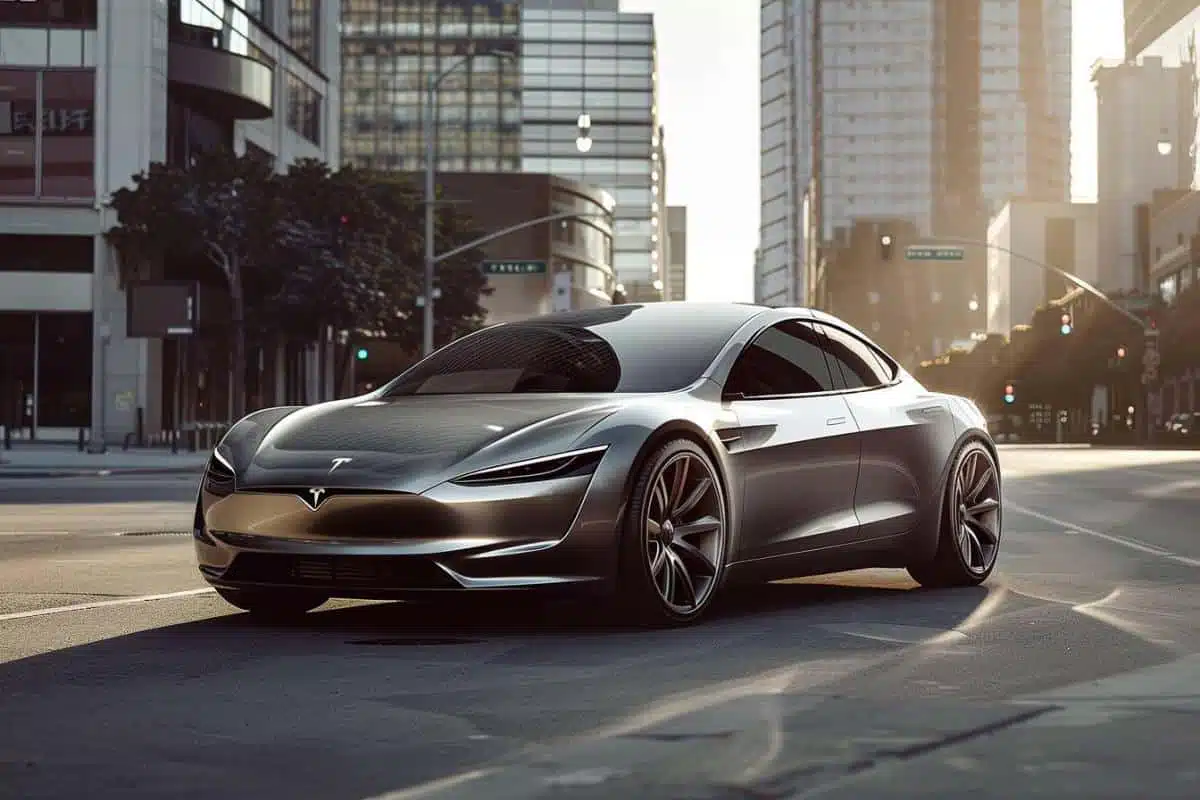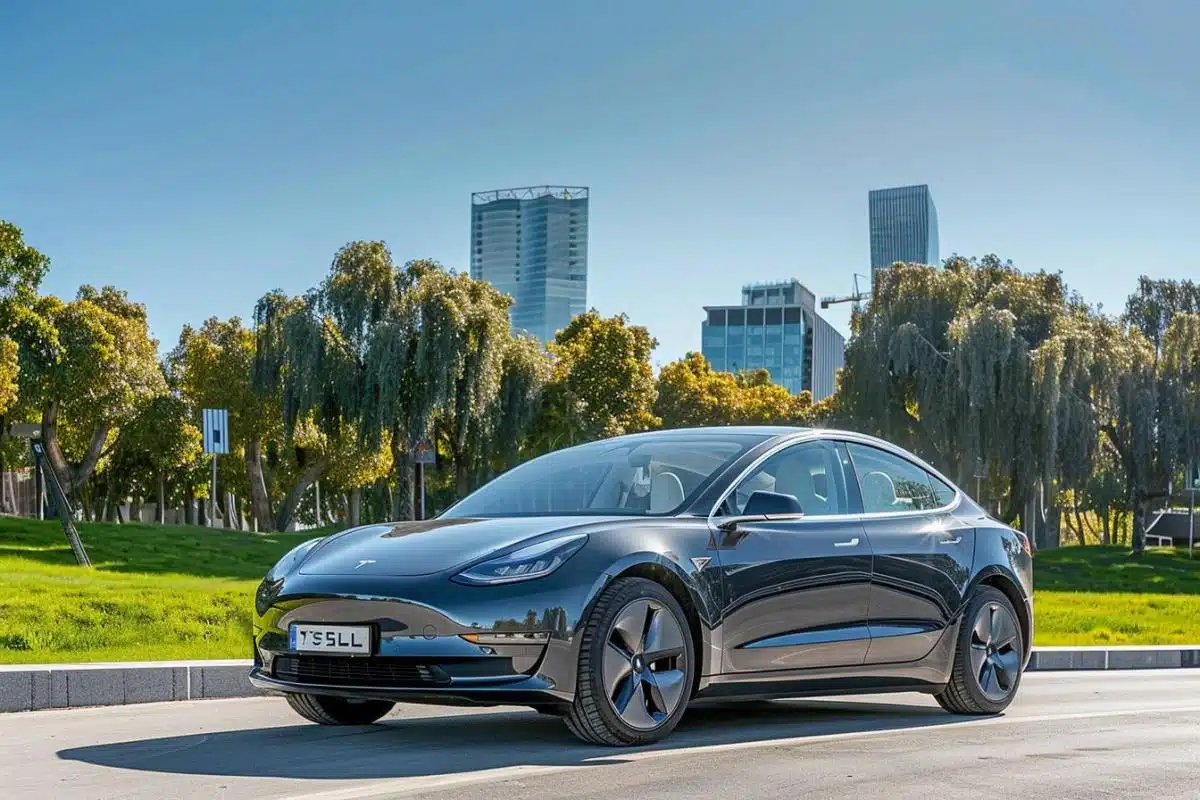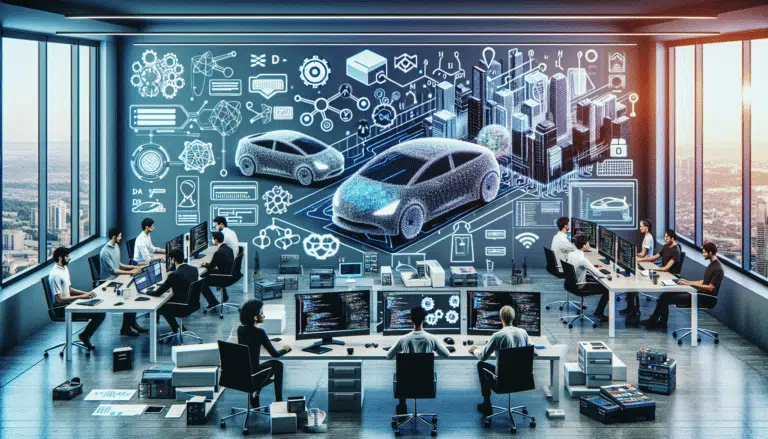Este modelo de Tesla tiene un riesgo que nadie esperaba (find out here)

The wait for the new Tesla models is coming to an end. With internal projects called Highland and Juniper, Tesla is preparing to renew its two bestsellers, the Model 3 and the Model Y, promising a series of enhancements and advanced features that could further consolidate its position in the market. This article will explore what we can expect from these new models in terms of design, efficiency, and technology.
SUMMARY:
| Main Idea | Details |
|---|---|
| 🚗 Model Renovation | Tesla improves Model 3 and Model Y with new designs and advanced technologies. |
| 🌿 Ergonomics Improvement | Redesign of the Model 3 Highland with aerodynamic lines and touchscreen. |
| 🔋 Structural Batteries | Introducing batteries that optimize space and costs in the Model 3 and Model Y. |
| 🏭 New Gigafactory | Building a Gigafactory in Mexico to produce the accessible Model 2. |
The Tesla Model 3 Highland arrives with significant changes in vehicle ergonomics
Tesla has launched the Model 3 Highland with a series of significant changes both in the exterior design and in the interior. This update, which began in September 2023 at the Shanghai Gigafactory, aims to align with the S and X models, addressing the demand of an increasingly competitive market.
Among the most notable modifications is the aesthetic redesign, with more aerodynamic lines that not only modernize the vehicle’s appearance but also optimize its energy efficiency. The aesthetic improvements are not just superficial; functional changes have also been made to the vehicle’s ergonomics, with a significant reduction in physical controls, replaced by a 17-inch touchscreen.
The introduction of structural batteries is one of the highlights of this renewal. These batteries not only promise an improvement in the usable space of the vehicle but could also contribute to a reduction in production costs. In fact, it is anticipated that the production of the Model 3 will be 50% more efficient than that of previous models, thanks to new assembly techniques that Tesla is implementing.
However, these innovations are not without challenges. The availability of materials such as lithium remains a concern for electric vehicle manufacturers. Tesla, however, relies on the growing recycling industry and the ability to find new reserves to mitigate these issues.
In the context of the energy transition that Tesla promotes, it is essential to emphasize the importance of investing in renewable energies. During “Investor Day,” Tesla emphasized the need for these energies to sustain its operations. The crucial role of battery storage to facilitate this transition was also discussed.
What to expect from the Tesla Model Y Juniper
Following in the wake of the Model 3 Highland, the Tesla Model Y is also set to receive significant updates under the Juniper project. Starting in October 2024, the changes will begin to materialize, keeping the Berlin Gigafactory at the forefront of production, with a rate of 4,000 Model Y produced weekly.
Expectations around the Model Y Juniper are high, especially with the expectation that its design will align even more with the Model S and X. It is anticipated that it will incorporate the 17-inch touchscreen and further reduce physical controls, similar to what has been seen in the revamped Model 3. These updates will not only enhance the user experience but could also positively influence the energy efficiency of the vehicle.
Additionally, the widespread use of structural batteries is expected to continue in the Model Y, offering a significant improvement in usable space and reducing production costs. Another key innovation is the 75% reduction in the use of silicon carbide and the elimination of rare earths in the manufacturing of electric motors. These initiatives will not only reduce costs but also improve the sustainability of production.
It is important to mention that Tesla continues to face challenges regarding the availability of critical materials such as lithium. However, the company is betting on the increasing use of recycled materials and exploring new reserves to ensure ongoing production without compromising its commitment to sustainability.
The Tesla Model 2 and the new Gigafactory in Mexico
One of the most anticipated announcements during “Investor Day” was the construction of a new Gigafactory in Monterrey, Mexico, aimed at producing the highly awaited Tesla Model 2, a more affordable model that could significantly expand Tesla’s customer base. With an estimated price of $25,000, the Model 2 would represent an accessible option for a broader audience.
The Monterrey Gigafactory will be essential not only for the production of the Model 2 but also for the expansion of Tesla’s operations in Latin America. With additional production capacity, Tesla could better meet the growing demand for electric vehicles in a region that is beginning to adopt this technology more widely.
In addition to the production of the Model 2, Tesla announced that the Gigafactory will also have a significant focus on renewable energies and sustainable energy. This aligns with Tesla’s vision of a global transition to more sustainable forms of mobility. The factory in Monterrey could also alleviate some of the production bottlenecks Tesla faces due to the limited availability of materials like lithium.
| Model | Estimated Price (USD) | Screen | Physical Controls | Structural Batteries | Silicon Carbide Reduction |
|---|---|---|---|---|---|
| Model 3 Highland | 35,000 | 17 inches | Reduced | Yes | Yes |
| Model Y Juniper | NA | 17 inches | Reduced | Yes | Yes |
| Model 2 | 25,000 | NA | NA | NA | NA |
In addition to the Gigafactory in Monterrey, Tesla has already reached the milestone of producing 4 million units, a figure that underscores the rapid growth and improvements in its production capabilities. Among the other future projects is the imminent launch of the Tesla Cybertruck, a compact electric car and a larger capacity vehicle, all of which are crucial components in Tesla’s expansion strategy.
The best alternatives to the Tesla Model 3 ‘standard range’
The electric vehicle market is becoming increasingly competitive, and although the Tesla Model 3 ‘Standard Range’ offers an excellent balance between price and performance, there are several alternatives to consider. Among the most notable are:
- Nissan Leaf
- Chevy Volt
- BMW i3
- Hyundai Kona Electric
- Volkswagen e-Golf
These options compete in terms of range, price, and features, offering consumers a wide range of choices based on their needs and preferences. For example, while the Nissan Leaf is known for its affordability, the BMW i3 stands out for its futuristic design and premium features. Chevy Volt, on the other hand, offers extended range thanks to its hybrid system.
When considering these alternatives, it is crucial to evaluate not only the initial cost but also factors such as electric range, the available charging infrastructure, and financing options. These decisions are particularly relevant in a rapidly evolving market, where technological innovations can make a significant difference in the ownership and usage experience of these vehicles.
In terms of range and energy efficiency, the Tesla Model 3 Standard Range remains one of the strongest options on the market. However, constant improvements and new offerings from other manufacturers mean that consumers have more choices than ever. Evaluating all these alternatives and keeping an eye on upcoming innovations can help make an informed decision that meets specific needs.
In conclusion, the renovation of Tesla models presents an exciting scenario for all automotive enthusiasts. As someone passionate about design and mechanics, I eagerly await these innovations, which promise not only to improve efficiency and sustainability but also to redefine what we expect from modern electric vehicles. To explore more about other innovations in the automotive industry, I recommend checking out articles like “The evolution and future of automatic gearboxes: how they redefine driving” or “Technological innovations in the development of automotive catalysts”. They can offer a broader perspective on how technology continues to transform our approach to driving and mobility.





